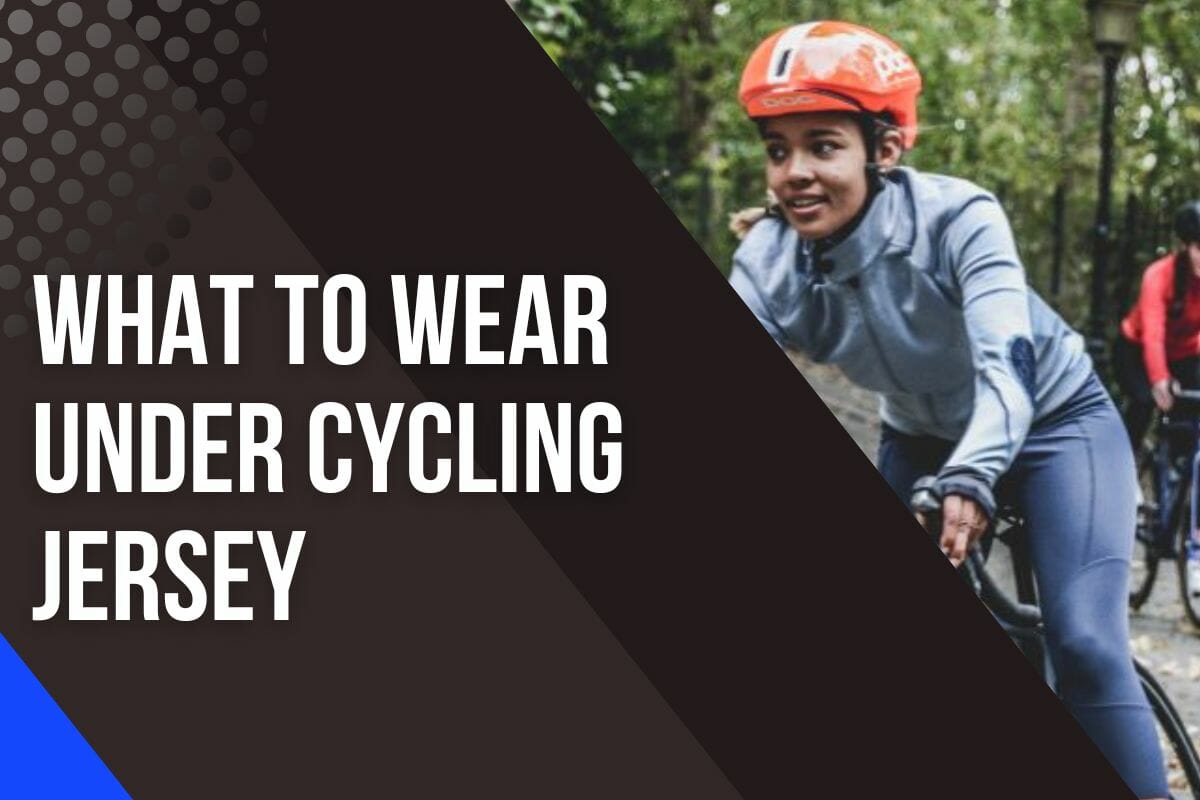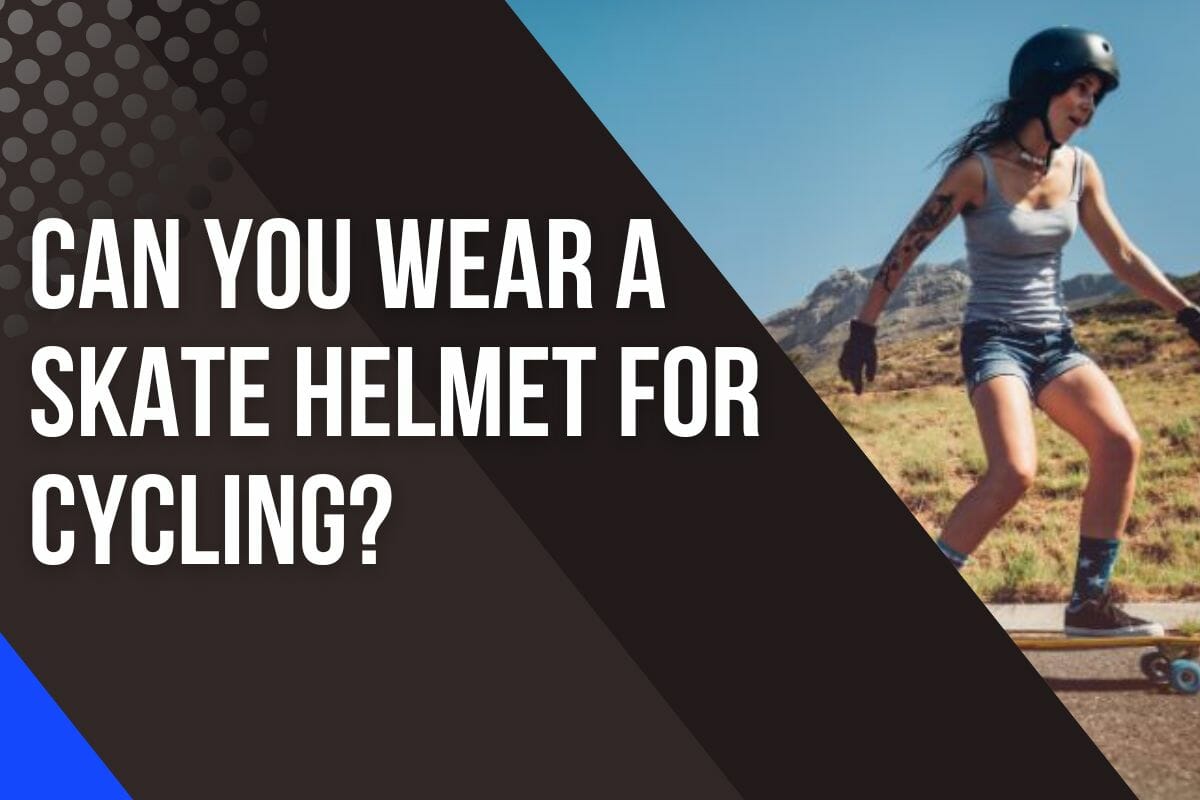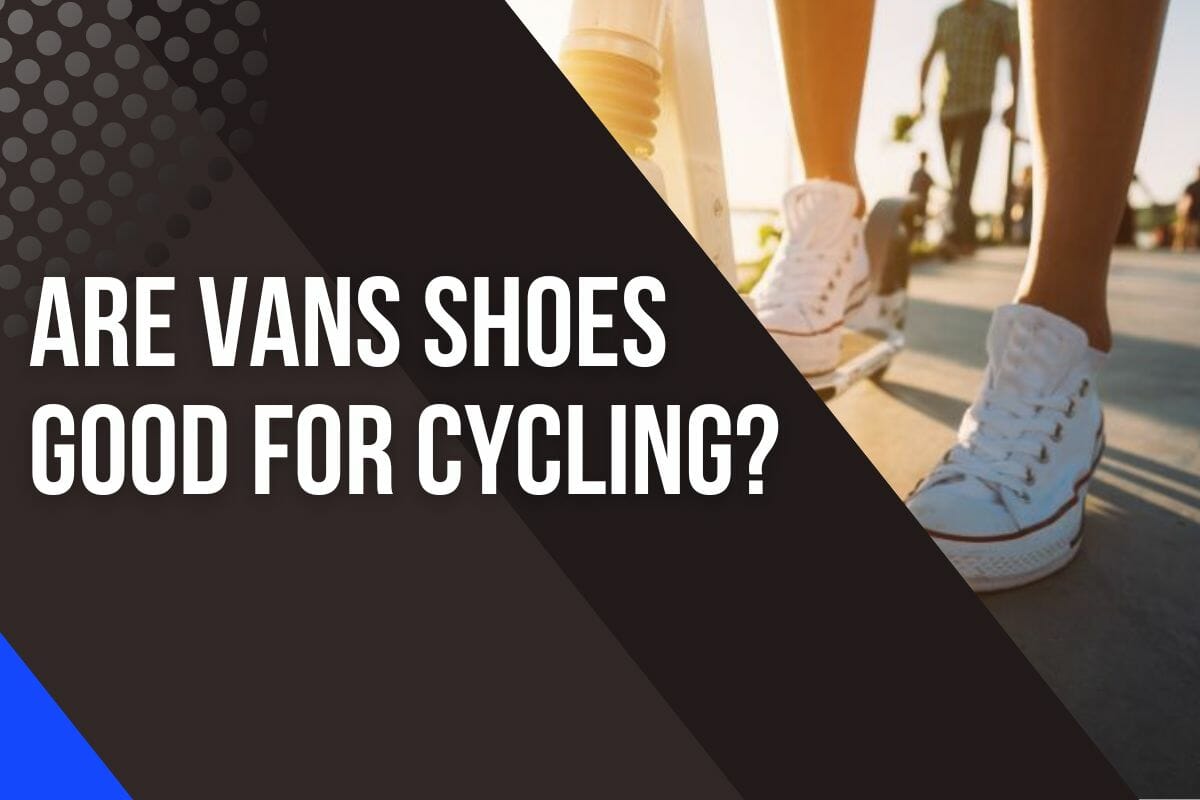What To And Not To Wear Under Cycling Jersey

Do you feel frustrated when you’re out on a ride because your cycling jersey doesn’t seem to stay in place?
As cyclists, we all know that what we wear under our jerseys can make a huge difference in our comfort, especially during a long ride.
The right base layer for males and a supportive bra for females can help reduce chafing, sweat buildup, and fatigue while riding.
In this article, we will discuss the importance of wearing the right garments beneath your cycling jersey and provide tips on what to wear for maximum comfort and safety.
So if you want to get the most out of your ride, read on to learn how to dress for success.
Should I Wear An Undershirt For Cycling?
As a cyclist, I’m constantly on the lookout for the perfect combination of clothing to keep me comfortable and dry while riding.
That’s why I’ve become a fan of wearing base layers or undershirts for cycling.
A base layer can be an essential piece of clothing for any cyclist, no matter the season.
When cycling during warmer summer months, it is particularly important to make sure you have a lightweight and breathable base layer that will help keep you cool and comfortable.
In cold winter months, opting for a thicker material as your base layer is more suitable as it provides insulation to keep body heat in and stop the chill from getting through.
Benefit Of Wearing A Base Layer Under Your Jersey
A cycling base layer is an essential item for any serious cyclist.
It provides insulation, breathability, and comfort during long rides in all kinds of weather conditions.
If you’re interested in the scientific details behind this, I wrote another article about why you need to wear a base layer here.
One of the main benefits of a base layer for cycling is its moisture-wicking properties.
As cyclists produce sweat during physical activity, having a fabric that moves quickly will help regulate body temperature and ensure riders remain comfortable throughout the ride.
Moisture-wicking materials quickly draw sweat away from the skin’s surface so it can evaporate more quickly – preventing that uncomfortable feeling of being drenched in sweat!
You will feel more comfortable throughout your ride and you’ll also notice that your clothes dry out faster when they finish exercising too.

Base layers are typically made from synthetic and performance fabrics such as polyester, lycra, or merino wool blends.
For example, merino wool is a popular choice because it not only provides excellent insulation but is also lightweight and highly effective when it comes to managing moisture.
It is also incredibly soft and doesn’t cause skin irritation like some other performance fabrics can do which ensures cyclists stay comfortable even during long rides in hot climates!
When choosing your cycling undershirt, make sure it fits well and isn’t too tight around the chest area (especially if you’re a woman and wearing a sports bra during cycling).
This ensures maximum comfort without compromising performance due to restricted movement or overheating caused by excessive fabric bunching up against your skin.
Additionally, check that any seams are flat enough not to rub against sensitive areas when pedaling which could cause irritation and discomfort during longer rides.
Unlock Your Freedom: The Power Of Sports Bra
However, for female cyclists, you may think that wearing a bra while cycling was more of an annoyance than a necessity.
Sure, it provided some support, but you probably didn’t think it was necessary for the type of riding you did.
Here are 5 reasons why wearing a sports bra is beneficial.
1. Support Your Breast
Some female cyclists can find themselves struggling with inadequate chest support.
Having a good boob support system can be crucial to optimizing your performance and comfort when cycling.
When biking on bumpy roads, inadequate bra support can lead to discomfort and cause the breasts to move excessively.
This movement is not only distracting but can limit what you are able to do while cycling, greatly reducing efficiency and enjoyment.

Knowing this, it’s important to wear something that provides adequate coverage and keeps the chest area supported while cycling, whether that be a sports bra or another supportive garment specifically designed for cycling.
It will also enhance the look and feel of your breasts so that you look better while riding.
Most importantly though, it will give you the confidence you need to ride fast and proud without worrying about looking weird.
2. Reduce Chafing
Chafing can be a major issue while biking and one of the main sources of discomfort is your nipples.
As any cyclist knows, after hours of riding you’ll often find yourself soaked in sweat, your jersey sticking to your skin and rubbing against the most tender parts of your body at every turn.
The result is unsightly redness and soreness that can be extremely painful if left untreated.
The best way to avoid this pitfall is to wear some form of protection on the nipples – whether it be a sports bra or a protective base layer specifically designed for cyclists.

This will act as a barrier between your skin and the fabric of your cycling jersey, stopping it from rubbing against sensitive areas and leading to chafing.
For those with larger chest sizes, sports bras are much more comfortable than attempting to bind breasts down with tape or elastic bands which can have other implications such as restricting movement, causing muscle pain, and even bruising.
3. Sweat Catching
Sweating is an inevitable effect of biking. People often sweat in many places, especially their fat deposits, like the area between and underneath their breasts.
This can be quite uncomfortable, not only because of the moisture but also because it could lead to chafing or rash due to movement and pressure applied by the clothing against the skin.

The sweat leaves trails that makes you look like a river trail on a sweaty day.
A way to combat this issue is to properly dress for cycling by wearing a supportive and breathable sports bra with anti-bacterial properties that wick away perspiration from your skin.
If you are out on a hot day and wear sunblock lotion which could cause sweating, try prepping yourself with a body powder beforehand which will help absorb access oils and produce a nice dry feel.
4. Allow You To Ride Unzipped
Riding with unzipped cycling jersey has its advantages, especially when it comes to getting a good amount of airflow into your shirt while cycling on those hot days.
The main benefit of this is that you feel cooler and less suffocated when the temperature rises.
However, there’s a need to be extra mindful when riding unzipped—unless you want an unfortunate wardrobe malfunction or risqué incident.
Wearing a bra during these moments is highly recommended since it offers support and protective coverage for biking while making you look great.

5. Minimize Fatigue
Research has shown that not wearing a bra causes a 55% increase in chest muscle activity, leading to more fatigue after just a few hours in the saddle.
That being said, many cyclists end up skipping the bra altogether due to the fact that they wear heart rate monitors which are already quite uncomfortable given the strong elastic bands which hold them in place.
Wearing a bra band over them makes it even less comfortable as well as increases chafing and skin irritation.
To avoid this, riders should find a balance between comfort and performance by looking for bras with adjustable straps and an elastic band that fits snugly around their chest.

The right fit will restrain their upper body so they don’t have too much movement while riding; this ensures they can ride longer without feeling too much discomfort or exhaustion.
Keeping the 50-55% increase in chest muscle activity that comes from leaving off the bra can be invaluable when trying to complete longer rides and training sessions without getting fatigued quickly.
Things To Consider When Choosing Your Bra
As there is such a wide range of different bras available on the market, it can be difficult to narrow down which one is right for you.
The key is to have a bra that provides superior comfort while riding.
Below are 3 factors you have to consider when buying a new bra.
1. Type
The right sports bra will ensure that you can ride for longer distances without discomfort, making your cycling experience more enjoyable.
Sports Bras
Sports bras are specifically designed for high-impact activities like cycling, providing essential support and reducing bounce while you ride.
They often have wider straps for added comfort and come in various styles, such as racerback or cross-back, to ensure a secure fit.
Compression Bras
Compression bras are designed to hold your breasts close to your chest, reducing movement and bounce.
They are made of stretchy, breathable materials that provide a snug fit without constricting your chest.
This type of bra is suitable for female cyclists who engage in high-intensity cycling workouts, as it offers additional support and comfort for longer rides.

Encapsulation Bras
Encapsulation bras offer individual support for each breast, making them ideal for cyclists with larger cup sizes.
These bras provide excellent support without compressing the chest, allowing for unrestricted breathing during your ride.
Look for encapsulation bras with adjustable straps and back closures to ensure the perfect fit and added support.
When it comes to material, nylon, and polyester are two excellent choices due to their moisture-wicking abilities.
These materials will keep you dry and comfortable while on your rides.
2. Impact Level
The impact level of a bike bra is an important factor when deciding which one to buy.
A high-impact level can put too much pressure on the chest and cause breathing problems, so it is best to go for something with a medium or low-impact level.
While a certain amount of tension is necessary in order to provide adequate support, going for a mid-level of padding will ensure that you don’t face any discomfort during your ride.

A model with ample cushioning helps spread the load evenly and absorb more shock when riding over bumps.
Thicker padding means more protection but at the cost of comfort; however, if you are riding over difficult terrain with greater potential for impacts then thicker padding might be necessary.
3. Straps
You will want straps that are comfortable and secure in order to ensure a pleasant ride, and wide enough that they won’t cause chafing.
This is why my wife always opts for wider straps for cycling bras.
They will allow for greater comfort and better support without digging into your skin.

Don’t be tempted to add snaps to your straps either; these could dig into your skin as well resulting in irritation and discomfort while you ride.
Also steer clear of any bras with wires inside them; these are not particularly suitable for biking journeys thanks to the weight of the wire, which pulls on the fabric awkwardly and can make riding uncomfortable.
Alternatives To Wearing A Bra
The bra is a necessary but often uncomfortable piece of clothing for many female cyclists.
While many would argue that it is vital for chest support and modesty in certain instances, others may disagree or even feel uncomfortable wearing one.
If you are unwilling to strap up before your ride, there are several alternative options that you can consider.
High-Cut Bib Shorts
High-cut bib shorts are a great solution for women who don’t want to wear a bra.
By using a breathable, stretchy material that is sewn between the shoulder straps, movement and wicking away of moisture can be controlled, while also preventing any kind of chafing.
This is great news, as riders can now stay comfortable and supported while cycling, no matter what their size or shape.

However, there is a downside to these high-cut bib shorts in that they can make it quite hot during longer rides due to the amount of material covering the body.
When nature calls mid-ride, getting into the restroom means removing both the jersey and straps completely exposing your upper body which could make some female riders feel embarrassed.
Base layer
As I mentioned earlier in this article, a base layer is a key piece of clothing for any cyclist.
It’s unisex and very comfortable.
It serves the same purpose as high-cut bib shorts but without bulkiness, making it a great choice for those who prefer comfort and style in their ride.
The main benefit of this is that it helps regulate body temperature by wicking away sweat and protecting against chafing.

Moreover, using it also gives you extra boob control which is very advantageous to many female cyclists.
When wearing a base layer with your bib shorts, make sure to fasten the straps over the top of the base layer to provide extra support and stability while riding.
Avoid Fashion Disasters By Not Wearing These While Cycling
In cycling, the gear and apparel you wear can make or break your ride.
While everyone has their own style and preferences when dressing for a bike outing, there are certain things that should always be avoided if you want to have an enjoyable experience.
Here’s what not to wear while biking.
The Wrong Helmet
Wearing the wrong helmet when cycling can be a recipe for disaster.
Wearing any other type of helmet designed for other activities (horse riding or skateboarding helmet) will not provide adequate protection which is essential to ensure safety on the road.
Make sure to buy helmets engineered specifically for cycling and CPSC certified.
The fit of your bike helmet should be snug and comfortable without being too tight.
Jeans Or Cotton
Despite their popularity, cotton, and jeans are not recommended for cycling for several reasons.
Cotton is a highly absorbent material that tends to retain moisture, such as sweat. When cycling, the body generates a significant amount of heat and sweat.
Beyond that, cotton and denim fabrics are not as breathable as other materials, like polyester or nylon.
From a flexibility standpoint, Jeans, in particular, are not designed for the range of motion required during cycling.

They can be restricting and uncomfortable, especially when pedaling uphill or navigating sharp turns.
Constant friction between the fabric and the cyclist’s skin can also lead to chafing and discomfort.
Both cotton and denim materials are heavier than synthetic alternatives and take longer to dry when wet.
This added weight can make cycling more strenuous and less enjoyable.
Underwear
Wearing underwear under your cycling shorts or bibs can cause chafing and saddle sores due to the extra material.
I personally recommend never using underwear when you’re wearing cycling shorts or bibs.

Do You Wear A Jersey Under A Cycling Jacket?
I often wear a cycling jacket over my jersey, and it can make a big difference in how comfortable and safe you feel on the bike.
During colder months, layering your clothes is key. This adds an extra insulating layer such as a fleece top or mid-weight jacket with windproofing capabilities.
In wet conditions, look for a jacket with waterproof materials like Gore-Tex or neoprene that will keep you dry during rides.
What Do You Put In Your Cycling Jersey?
As you get geared up for your next cycling adventure, it is important to think about what items you should carry in your jersey.
It has a series of three pockets at the back of the jersey, perfect for carrying everything you need on your ride.
You can put anything from energy gels and bars to phones, wallets, and keys into these pockets — making sure you have what you need for any length of ride.

The top of each pocket has an elastic which means items won’t fall out when you are biking and are easy to access while in an upright rider position.
With such convenient storage solutions built into a comfortable garment, it is no wonder why cyclists use their jerseys as a catchall when they need extra gear while biking.
My Verdict
It’s important to choose the right material for an undershirt, base layer, or sports bra when cycling.
A lightweight, moisture-wicking material is ideal so you can stay dry and comfortable on your ride.
You should also make sure it fits snugly against your body but isn’t too tight that it restricts movement.
Also, take preventative measures such as applying chamois cream to avoid painful chafing during your rides.





